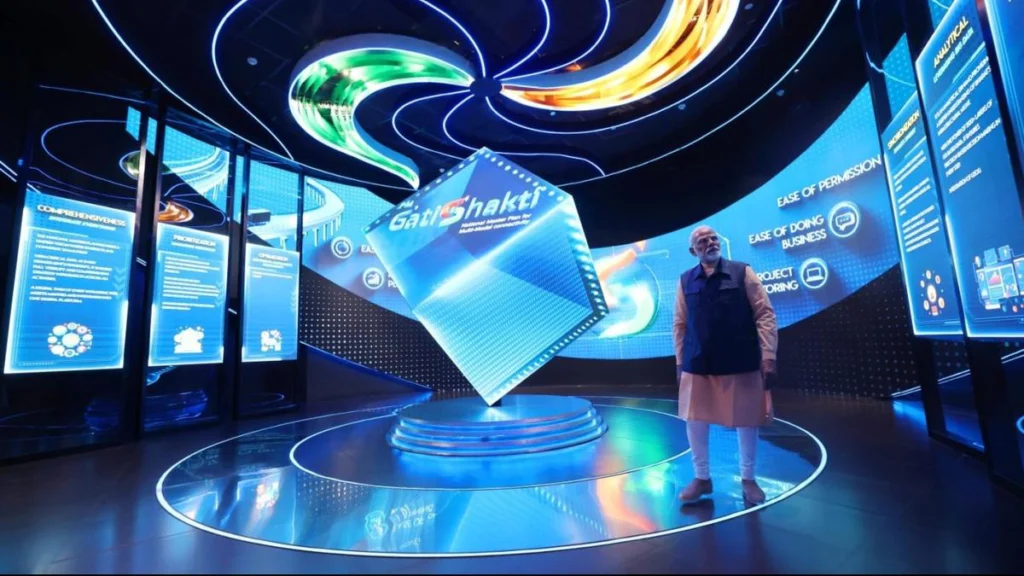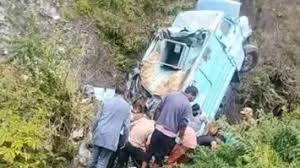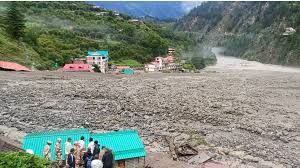Technology reduced divides instead of deepening them: PM Modi

Technology Reduced Divides Instead of Deepening Them: PM Modi
Prime Minister Narendra Modi marked the tenth anniversary of India’s Digital India program on July 1, 2025. In a LinkedIn post, he reflected on its profound impact. He highlighted how technology has bridged divides, reducing the gap between the privileged and the underprivileged. Through digitization, India has eliminated the middlemen that once hindered accessibility and development. The Prime Minister emphasized that technology has empowered citizens, connecting them directly to government services and information.
Since its launch, Digital India has aimed to provide digital infrastructure, deliver services digitally, and increase digital literacy. The program has brought technology to every corner of India, especially rural areas that once lagged behind. Modi’s post underscored the shift in mindset, stating that, instead of deepening divides, technology has provided new opportunities for growth and empowerment.
Overcoming Doubts About Technology
At the launch of Digital India, there were many doubts about India’s readiness to adopt and use technology. Modi pointed out that the country had spent decades questioning the ability of Indians to use technology effectively. “We changed this approach and trusted the ability of Indians to use technology,” he stated. The Digital India program sought to break this skepticism, believing in the potential of every Indian to harness the power of technology.
India’s transformation over the last decade has proven the naysayers wrong. By providing access to digital services, millions of Indians have gained access to education, health services, and financial assistance. The post also acknowledged that the progress made in just ten years has been remarkable, despite the initial doubts.
Empowering People with Technology
The core of Digital India’s success lies in its ability to directly connect citizens with government services. By digitizing essential services, people no longer have to rely on middlemen or face long bureaucratic delays. Services such as passport applications, financial assistance, and various government schemes can now be accessed online, cutting down on corruption and inefficiency.
One of the program’s standout successes has been the promotion of digital payments. Platforms like UPI (Unified Payments Interface) have made transactions easier and more accessible. Millions of people, especially in rural areas, now use smartphones for banking, shopping, and transferring money. This has brought financial inclusion to millions who were previously excluded from the formal banking system.
The initiative has empowered small businesses, farmers, and women. Digital tools have opened up new avenues for entrepreneurship. E-commerce platforms and digital literacy programs have enabled people in small towns and rural areas to access global markets, changing their economic prospects. Women in particular have benefited from the reach of digital platforms, as they now have access to educational resources, health services, and income-generating opportunities.
Connecting the Rural and Urban Divide
Another significant aspect of Digital India has been its impact on bridging the rural-urban divide. The government’s effort to improve broadband infrastructure in rural areas has connected previously isolated regions. This shift has provided people with access to online education, government services, and telemedicine. Farmers, who once struggled to access crucial market information, can now use technology to get real-time updates on crop prices, weather forecasts, and new farming techniques.
Digital India has helped decentralize power by giving people the tools to participate in their own development. The empowerment of rural citizens has had a direct impact on India’s agricultural and economic sectors, which rely heavily on rural communities.
Financial Inclusion and Security
Digital India’s push for financial inclusion has helped millions of Indians access banking services for the first time. The Jan Dhan Yojana initiative, which provides financial accounts to the unbanked, has become a cornerstone of the program. Combined with the Pradhan Mantri Mudra Yojana (PMMY), which offers micro-financing to small businesses, these schemes have made it easier for people in rural areas to access loans and manage their finances.
Additionally, the rise of the Aadhar system (India’s biometric identification program) has further strengthened financial security. By linking Aadhar to bank accounts, the government has ensured that direct subsidies and financial assistance reach the right individuals, reducing leakages and promoting transparency.
The Growth of Digital Literacy
Digital literacy programs have also been a significant part of the initiative. The Pradhan Mantri Gramin Digital Saksharta Abhiyan (PMGDISHA) has worked to train millions of rural Indians in basic digital skills. This initiative has empowered people to use technology in their everyday lives and has helped close the digital literacy gap.
The emphasis on digital education has also led to a surge in online learning platforms. With the rise of e-learning, students from remote villages can access educational resources, take courses, and improve their skills. The government’s push to digitize education has opened new opportunities for students, particularly those from disadvantaged backgrounds.
Global Recognition and India’s Digital Leadership
India’s efforts in expanding digital access have garnered international recognition. The country has become a leader in digital innovation, with its vast technology ecosystem and thriving startup culture. India’s digital transformation is a shining example of how technology can be harnessed for social and economic progress.
The Digital India initiative has also contributed to the country’s growing role on the global stage. India has emerged as a hub for IT services, and its digital solutions are being adopted by countries around the world. India’s focus on creating digital infrastructure and empowering its people has made it a global leader in the digital economy.
Challenges and Future of Digital India
While Digital India has seen tremendous success, there are still challenges to overcome. Digital literacy remains an issue for some, especially among older populations and those in the most remote areas. The digital divide persists in certain parts of the country, and further efforts are needed to ensure that no one is left behind in the digital age.
The government has recognized these challenges and is focusing on expanding digital infrastructure, especially in underserved regions. Future efforts will focus on improving internet connectivity, expanding digital education programs, and enhancing the security of digital transactions. Additionally, efforts will be made to address cybersecurity concerns and ensure that digital platforms remain safe and accessible for all citizens.
Conclusion
As Prime Minister Narendra Modi celebrates the tenth anniversary of the Digital India program, it is clear that the initiative has fundamentally transformed the country. By using technology to reduce divides, increase financial inclusion, and empower individuals, Digital India has reshaped the lives of millions. The program has not only brought technological access to the masses but also given people the tools they need to succeed in an increasingly digital world.
Looking ahead, Digital India’s vision will continue to evolve. With ongoing efforts to strengthen infrastructure and promote digital literacy, the country will continue to build on its success. India’s digital future is bright, and as the world becomes more interconnected, the country’s role in shaping the global digital economy will only grow stronger.






